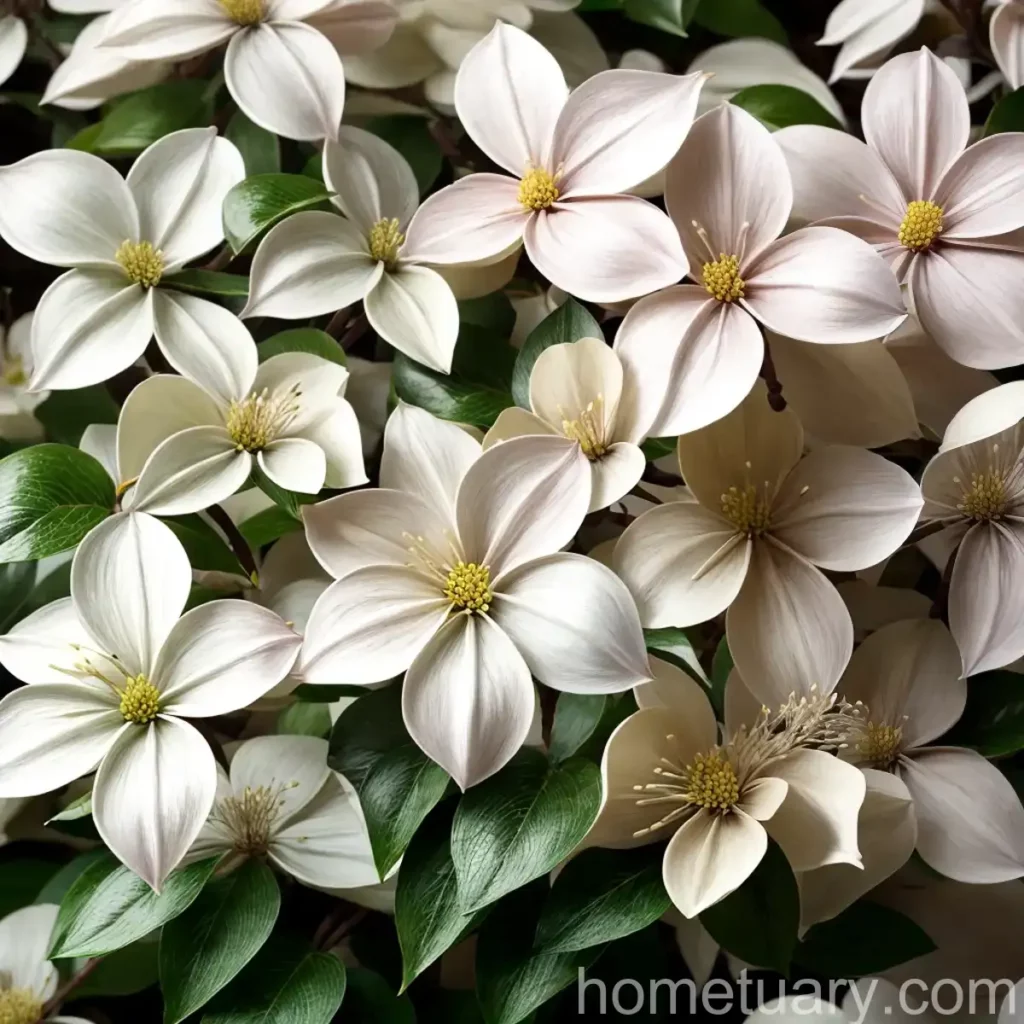Flowering Dogwood (Cornus florida ‘Daybreak’)
The flowering dogwood, scientifically known as Cornus florida ‘Daybreak,’ is a captivating and popular ornamental tree native to eastern North America. Its vibrant flowers, appealing foliage, and distinctive bark make it a sought-after addition to gardens, parks, and landscapes. In this comprehensive guide, we’ll explore the key characteristics, cultural requirements, common uses, maintenance practices, and interesting facts about the flowering dogwood. Whether you’re a gardening enthusiast, a landscape designer, or an aspiring botanist, this article will provide valuable insights into the cultivation and appreciation of this beautiful flowering tree species.
What is the Flowering Dogwood?
The flowering dogwood (Cornus florida ‘Daybreak’) belongs to the Cornaceae family and is a deciduous tree known for its remarkable floral display during spring. It typically reaches a height of 20-30 feet, with a similar spread, and features a low-branching, horizontal to erect growth habit. The ‘Daybreak’ cultivar specifically stands out for its attractive pink bracts that surround the true flowers. These bracts, which resemble petals, create a stunning visual impact, especially when viewed en masse.
In addition to its ornamental value, the flowering dogwood also holds cultural significance, being the state tree of Virginia as well as the state flower of North Carolina. Its botanical name, Cornus florida, reflects its native range, as “florida” means “flowering” in Latin, paying homage to the tree’s spectacular floral showcases.
Key Takeaways – Flowering Dogwood (Cornus florida ‘Daybreak’)
Before delving into the specific aspects of the flowering dogwood’s cultivation and care, let’s highlight the key takeaways that will be covered in detail in the subsequent sections:
- Culture
- Uses
- Water
- Sunlight
- Fertilizer
- Soil
- Pruning
- Propagation
- Container Popularity
- Common Diseases
- Disease Diagnosis
- Common Pests
- Botanist’s Tips
- Fun Facts
- Links to External Resources
Each of these components will contribute to a comprehensive understanding of the flowering dogwood and equip enthusiasts and horticulturists with the knowledge needed to cultivate and appreciate this magnificent tree.
Culture
Water
Sunlight
Fertilizer
Soil
Pruning
Propagation
The propagation of flowering dogwood, particularly the ‘Daybreak’ cultivar, can be achieved through several methods, including:
- Seeds: Harvesting seeds from mature specimens and sowing them in a suitable growing medium.
- Cuttings: Utilizing semi-hardwood or hardwood cuttings for propagation, often with the aid of rooting hormones and controlled environmental conditions.
- Grafting: Joining a ‘Daybreak’ scion (upper portion of the plant) onto a compatible rootstock to create a new tree with identical characteristics.
Each of these techniques requires careful consideration of timing, environmental factors, and horticultural practices to ensure successful propagation of this prized cultivar.
Container Popularity
The flowering dogwood, including the ‘Daybreak’ variety, can also thrive in container cultivation, offering versatility in landscaping and gardening endeavors. When grown in containers, it’s important to provide adequate space for root development, consistent moisture levels, and appropriate protection during extreme weather conditions. Container-grown specimens can serve as focal points in outdoor settings or enhance indoor spaces with their seasonal beauty.
Uses
Ornamental Beauty
Ecological Value
Symbolism
Cultural Significance
Common Diseases
Disease Diagnosis
Disease Management
Common Pests
Pest Identification
Pest Management
Botanist’s Tips
Selecting Healthy Specimens
Promoting Flowering
Encouraging Native Wildlife
Fun Facts
Links to External Resources
In addition to the insights provided in this guide, it’s valuable to explore external resources and further expand your knowledge of the flowering dogwood. The following links offer in-depth information, visual references, and community insights related to this beloved ornamental tree:
- The American Conifer Society
- Dave’s Garden
- The North American Native Plant Society
- National Gardening Association
- The Morton Arboretum
Conclusion
The flowering dogwood (Cornus florida ‘Daybreak’) stands as a testament to the splendor of native flora, captivating enthusiasts and nature lovers with its exquisite blossoms, lush foliage, and enduring presence in the landscape. By embracing the cultural significance, horticultural practices, and ecological value of this beloved tree, we can foster a deeper appreciation for the natural world and the remarkable plant species that enrich our lives.
Through careful cultivation, thoughtful stewardship, and ongoing education, we can ensure that the legacy of the flowering dogwood continues to flourish for generations to come, inspiring awe and admiration in the hearts of all who encounter its timeless beauty.















